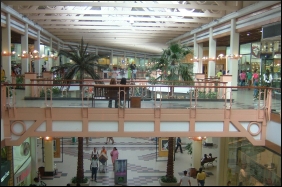|

|
Youngistan to drive India's economy
|
|

|
|
| Top Stories |
 |
|
|
|
Neena Bhandari | 29 Sep, 2008
As the Indian consumer goes all out to seek new experiences from food and wine, installs an in-home spa and holidays in exotic destinations, modern retail is well on its way to becoming the key driver of the country's economy, says Geoff Hiscock, an Australian author.
Hiscock's latest book "India's Store Wars: Retail Revolution and the Battle for the Next 500 million Shoppers", published by John Wiley & Sons, has just hit the stands in India while being available in Australia.
"Modern retail is well on the way to being the key driver of the Indian economy over the next decade because India's consumer demand is simply unstoppable. For Australian suppliers of a whole range of goods and services, that represents a marvellous opportunity over the next few years," Hiscock told IANS in an interview.
The book explores the changes in the demographic profile, tastes and spending habits of the Indian consumer, how younger Indians have more confidence and are willing to borrow to finance their consumption.
Despite the recent shocks caused by the sub-prime crisis in the US, young Indians are prepared to borrow money to buy a new two-wheeler or car, a digital TV, air-conditioner or even a house. They are also more aware of the sources of credit available to them, says Hiscock.
According to the latest research in the India Retail Report 2009, retail spending by Indian consumers is expected to rise from Rs.13.3 trillion (US$0.28 trillion) now to Rs.18.1 trillion ($0.38 trillion) by 2010.
"That is a huge increase in spending, and we can put it down to the fact that not only are incomes rising but younger people entering the workforce are more prepared to spend money than their parents were. The 'save' mentality is being replaced by the 'spend' mentality," Hiscock told IANS.
For the author the most interesting aspect of India's consumer boom has been the far faster growth in the modern retail sector - hypermarkets, supermarket chains, mini-marts, department stores and specialist shops in shopping malls - than the traditional retail sector made up of the 12 million ubiquitous grocery stores, wet markets, bazaars and weekly or monthly rural fairs.
Until only a few years ago, modern retail's share of the total consumer spending was only 3-4 percent. But after growing at more than 40 percent in 2007, modern retail has a share of 5.9 percent and by 2010 could have a 13 percent share, according to a report prepared by Images F&R Research, and released at the 2008 India Retail Forum held in Mumbai last week.
The book provides rich insights on the intriguing subject of what makes India tick and the challenges facing the country's retail sector.
For three years in a row (2005 to 2007), consulting firm A.T. Kearney has ranked India the top retail destination globally, ahead of Russia and China.
"However, the outlook is not all rosy. Apart from the global economic situation, there are some specific problems India must contend with. Perhaps the most obvious is the poor supply chain, which leads to terrible wastage rates in the shipping of fresh fruit, vegetables and dairy products. India desperately needs better logistics, including a comprehensive cold chain system in transportation," the author warns.
"There is a lack of retail management skills and the information technology backbones necessary to run modern stores efficiently. Retailers face high real estate prices and extreme competition in the key metropolitan markets," he adds.
The author also draws attention to the volatile political environment where market middlemen, small traders' associations, grocers and street vendors, fearful for their economic future, are opposing big domestic retail newcomers such as Bharti Group, Reliance Industries and Aditya Birla Group, and foreign contenders such as Wal-Mart.
"But overall, I'm confident India's modern retail sector can work through these issues, and the consumption boom will continue, thereby driving up India's growth rate," says the veteran journalist-turned author.
Hiscock's other hugely successful books include "Asia's Wealth Club" (1997), "Asia's New Wealth Club" (2000) and "India's Global Wealth Club: The stunning rise of its billionaires and the secrets of their success" (2007).
|
|
|
| |
|
|
|
|
|
|
|
|
|
|
|
|
|
|
| |
| Customs Exchange Rates |
| Currency |
Import |
Export |
US Dollar
|
84.35
|
82.60 |
UK Pound
|
106.35
|
102.90 |
Euro
|
92.50
|
89.35 |
| Japanese
Yen |
55.05 |
53.40 |
| As on 12 Oct, 2024 |
|
|
| Daily Poll |
 |
 |
| Do you think Indian businesses will be negatively affected by Trump's America First Policy? |
|
|
|
|
|
| Commented Stories |
 |
|
|
|
|
|
| |
|